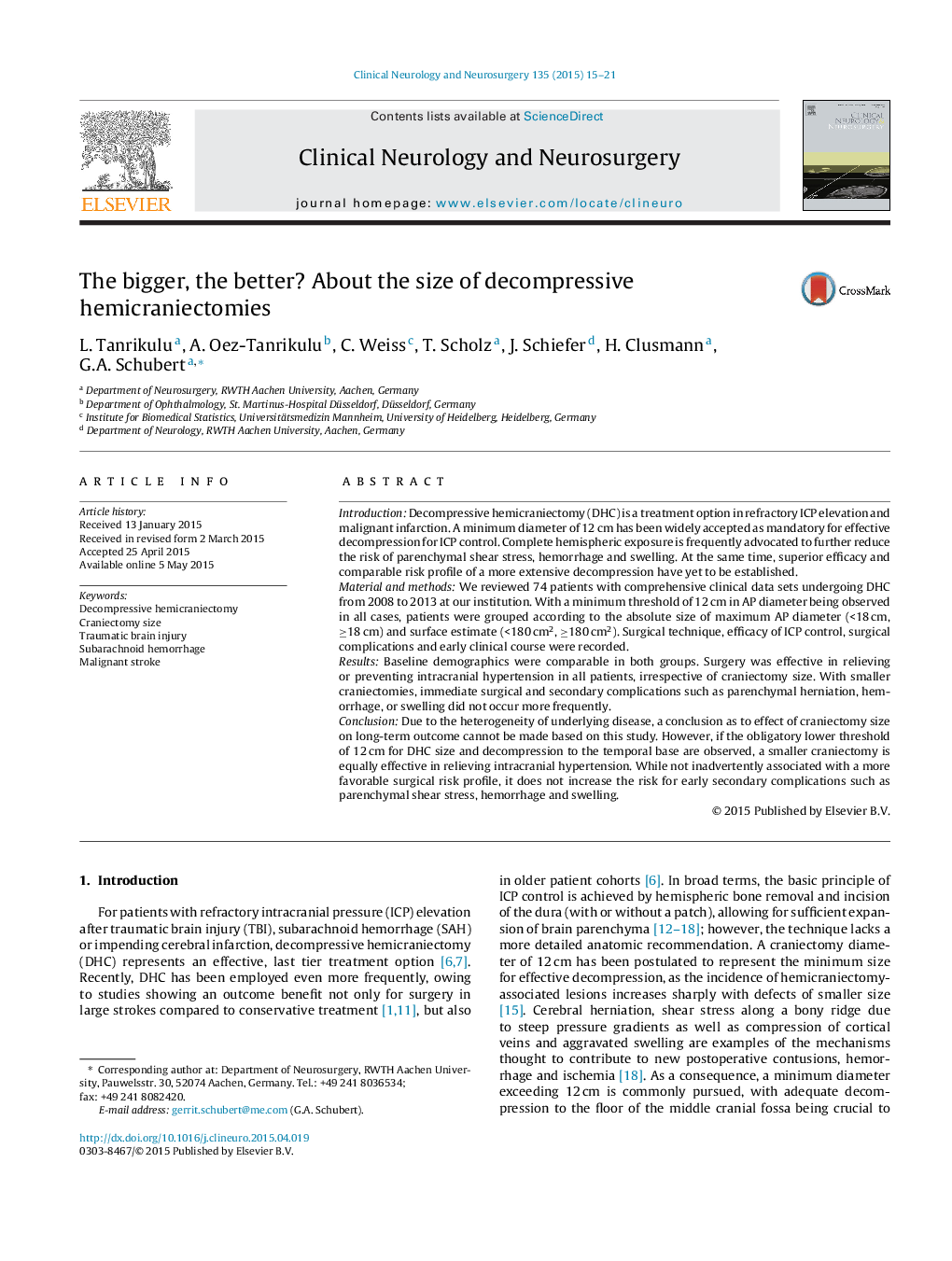| کد مقاله | کد نشریه | سال انتشار | مقاله انگلیسی | نسخه تمام متن |
|---|---|---|---|---|
| 3039851 | 1579687 | 2015 | 7 صفحه PDF | دانلود رایگان |

• Decompressive hemicraniectomy (DHC) is a treatment option in refractory ICP elevation and malignant infarction.
• Minimum threshold of 12 cm in AP diameter observed in all cases.
• Baseline demographics were comparable in both groups. Surgery was effective in relieving or preventing intracranial hypertension in all patients.
• Smaller craniectomy is equally effective in relieving intracranial hypertension respecting a lower threshold of 12 cm.
• No increase in the risk for secondary complications.
IntroductionDecompressive hemicraniectomy (DHC) is a treatment option in refractory ICP elevation and malignant infarction. A minimum diameter of 12 cm has been widely accepted as mandatory for effective decompression for ICP control. Complete hemispheric exposure is frequently advocated to further reduce the risk of parenchymal shear stress, hemorrhage and swelling. At the same time, superior efficacy and comparable risk profile of a more extensive decompression have yet to be established.Material and methodsWe reviewed 74 patients with comprehensive clinical data sets undergoing DHC from 2008 to 2013 at our institution. With a minimum threshold of 12 cm in AP diameter being observed in all cases, patients were grouped according to the absolute size of maximum AP diameter (<18 cm, ≥18 cm) and surface estimate (<180 cm2, ≥180 cm2). Surgical technique, efficacy of ICP control, surgical complications and early clinical course were recorded.ResultsBaseline demographics were comparable in both groups. Surgery was effective in relieving or preventing intracranial hypertension in all patients, irrespective of craniectomy size. With smaller craniectomies, immediate surgical and secondary complications such as parenchymal herniation, hemorrhage, or swelling did not occur more frequently.ConclusionDue to the heterogeneity of underlying disease, a conclusion as to effect of craniectomy size on long-term outcome cannot be made based on this study. However, if the obligatory lower threshold of 12 cm for DHC size and decompression to the temporal base are observed, a smaller craniectomy is equally effective in relieving intracranial hypertension. While not inadvertently associated with a more favorable surgical risk profile, it does not increase the risk for early secondary complications such as parenchymal shear stress, hemorrhage and swelling.
Journal: Clinical Neurology and Neurosurgery - Volume 135, August 2015, Pages 15–21